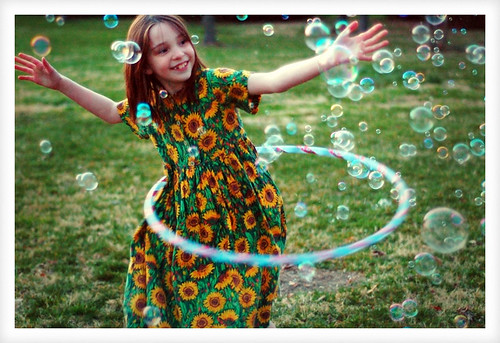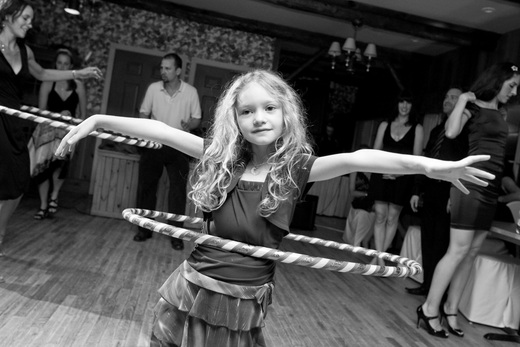
-
МјРЇСІИёСЖШИМі
-
 MINUTE TO WIN IT
MINUTE TO WIN IT 46,756
46,756 -
 Apple Eating Contest Game
Apple Eating Contest Game 34,211
34,211 -
 SINGING BEE
SINGING BEE 23,703
23,703 -
 DEAL OR NO DEAL23,324
DEAL OR NO DEAL23,324 -
 rodeo masbatenio19,401
rodeo masbatenio19,401 -
 Luksong Lubid14,251
Luksong Lubid14,251 -
 EGG AND SPOON RACE12,216
EGG AND SPOON RACE12,216 -
 Tumbang Preso12,151
Tumbang Preso12,151 -
 HULA HOOP12,135
HULA HOOP12,135 -
 BUNONG BRASO ( ARM WRESTLING)12,082
BUNONG BRASO ( ARM WRESTLING)12,082
HULA HOOP
A hula hoop is a company toyhoop that is twirled around
the waist, limbs or neck. Invented in 1958 by
Arthur K. Melin and Richard Knerr, children and adults
around the world have played with hoops, twirling, rolling
and throwing them throughout history. Hula hoops for children
generally measure approximately 71 centimetres (28 in)
in diameter, and those for adults around 1.02 metres (40 in).
Traditional materials for hoops include willow, rattan
(a flexible and strong vine), grapevines and stiff grasses.
Today, they are usually made of plastic tubing. Plastic
hula hoops are often filled with rocks or materials which
serve as weights to carry the hoop around the body.
Background Information
Native American Hoop Dance was, and is a form of storytelling
dance incorporating anywhere from one to 30 hoops as props .
These props are used to create both static and dynamic shapes,
or formations, representing various animals, symbols, and
storytelling elements. The dance is generally performed by
a solo dancer with many hoops.
Hula hooping has been a type of exercise and play
from as early as the 5th century in ancient Greece.[dubious ] Before it was known and
recognized as the common colourful plastic toy
(sometimes with water inside the actual hoop),
it used to be made of dried up willow, rattan,
grapevines, or stiff grasses. Even though the has
existed for thousands of years, it is often
misunderstood as being invented in the 1950s.
According to author Charles Panati, there was a 'craze' of using wooden and
metal hoops in 14th century England. He reports that doctors treated patients
suffering from pain and dislocated backs due to hooping - and heart failure was
even attributed to it. Panati also says that the name 'hula' came from the
Hawaiian dance in the 18th century, due to the similar hip movements.
Modern History
The hoop gained international popularity in the late 1950s when a plastic
version was successfully marketed by California's Wham-O toy company.
In 1957, Richard Knerr and Arthur "Spud" Melin, starting with the
idea of Australian bamboo "exercise hoops", manufactured 1.06 metre
(42 in) hoops with Marlex plastic. With give-aways and national
marketing and retailing, a fad was started in July, 1958; twenty-five
million plastic hoops were sold in less than four months, and in two years
sales reached more than 100 million units. Carlon Products Corporation
was one of the first manufacturers of the hula hoop. During the 1950s,
when the hula hoop craze swept the country, Carlon was producing
more than 50,000 hula hoops per day. The hoop was inducted into the
National Toy Hall of Fame at The Strong in Rochester, New York, in 1999.
Modern Hooping
The past few years have seen the re-emergence of hula hooping, generally
referred either "hoopdance" or simply "hooping" to distinguish it from the
children's playform. An International Holiday World Hoop Day has become
the hula hoop holiday celebrating the circle around the world. Every year, in
numerical sequence starting from 2007-07-07 and continuing through
2012-12-12 hoopers dance in every city and country to raise money and donate
hoops to others who can't afford them. Modern hula hoopers can be found
among fans of jambands like The String Cheese Incident, Disco Biscuits,
Phish and participants of Burning Man and more recently at other music
festivals like Bonnaroo, Camp Bisco, The Gathering of the Vibes, All Good,
Coachella, etc.
Many modern hoopers make their own hoops out of
polyvinyl chloride, polyethylene, high-density polypropylene, or
polypropylene tubing. The polyethylene hoops, and especially
the polyvinyl chloride hoops, are much larger and heavier than
hoops of the 1950s. The size and the weight of the hoop affects
style of the hooper. Heavier, larger hoops are more often used
for slow hooping and body tricks while lighter, thinner tubing is
used for quick hand tricks. These hoops may be covered in a
fabric or plastic tape to ease the amount of work in keeping
a hoop twirling around the dancer, and can be very colorful.
Some use glow-in-the dark, patterned, or sparkling tape, and
others are produced with clear tubing and filled with plastic
balls, glitter, or even water to produce visual or audio effects
when used. LED technology has also been introduced in the past
few years, allowing hoops to light up at the flick of a switch.
The hooping movement vocabulary now includes many core or 'on body'
moves, many 'off body' moves and a multitude of transitions creating
the possibility for endless permutations and combinations. When a
hoop dancer improvises combinations of movements (usually to music)
he or she can get into a 'flow' state where the moves seem almost
to direct themselves. The mind detaches from planning or judging
the dance and exists in a state of blissful awareness. In order to get
to a place of flow more easily and frequently it is advised that one
should have a steady practice - daily, if possible. It takes a certain
amount of drill to get comfortable enough to get to the flow. Both
drill and flow count towards 'flight time' - the actual amount of time
in the hoop that is logged.
During the recent revitalization of the hula hoop, its uses have
been extended to serve as an implement for fitness. A multitude
of websites have been created as a result of this revival, many of
which provide links to hooping clubs, online retailers from which to
buy specialized hula hoops, and information on workout routines.
Hula hooping in recent years has become a more social activity
than it may have been in the fifties.
Within the past few years, some hoopers have taken up fire hooping,
in which spokes are set into the outside of the hoop and tipped
with kevlar wicks, which are soaked in fuel and lit on fire.
Some companies produce collapsible hula hoops for easy transport and
versatility: each hoop breaks down into four or more pieces to later be
reassembled. Other collapsible hoops are simply twisted down, and
folded in half for easy storage.
- ЁЄ
- ЁЄDr.quack quack game (THE HUMAN
- ЁЄSLIPPER GAME
- ЁЄBati-Cobra
- ЁЄMONOPOLY GAME
- ЁЄcoconut shell race/sangkayaw
- ЁЄJack\'n\'Poy
- ЁЄTEN-TWENTY
- ЁЄtomato dance
- ЁЄSerereng
- ЁЄ\"Araw - Lilim\" (Day and Nigh
- ЁЄMAALIS-ALIS/ kaya, kulob (palm
- ЁЄBottle and Straw Game
- ЁЄHabulan ng Baboy (chase and ca
- ЁЄPING TAC TOE



- ЁЄSalapan Festival
- ЁЄEmpanada Festival (Batac City)
- ЁЄPADUL-ONG FESTIVAL
- ЁЄKaumahan Festival in Barili
- ЁЄKAGASANGAN FESTIVAL
- ЁЄLalin Festival in Asturias
- ЁЄTinabuay Festival
- ЁЄGayon Bicol Festival
- ЁЄPINYASAN FESTIVAL in CAMARINES
- ЁЄMAGAYON FESTIVAL
- ЁЄBANAUAN FESTIVAL (BARANGAY.GUA
- ЁЄThe Tuna Festival in Gensan
- ЁЄPINTOS FESTIVAL BOGO CITY, CEB
- ЁЄPanaad sa Negros
- ЁЄPasalamat Festival



- ЁЄ
- ЁЄCEBU WESTOWN LAGOON
- ЁЄGREEN LAGOON, COMPOSTELA
- ЁЄCALLAO CAVE
- ЁЄMOUNT PINATUBO IN PHILIPPINES
- ЁЄBATAN ISLAND in Batanes.
- ЁЄCALAGUAS ISLAND, CAMARINES NOR
- ЁЄAGHO ISLAND
- ЁЄCARAMOAN ISLAND IN CAMARINES S
- ЁЄSAMBAWAN ISLAND
- ЁЄPLACES TO VISIT IN LANAO DEL N
- ЁЄPLACES TO VISIT IN ZAMBOANGA C
- ЁЄPlaces to visit in Rizal Provi
- ЁЄHISTORIC TOWN OF VIGAN CITY, I
- ЁЄCAMBUGAHAY FALLS, SIQUIJOR ISL













 ЧЪРкДхФФ ОпАЃЛѓДу ПРЧТ
ЧЪРкДхФФ ОпАЃЛѓДу ПРЧТ 13ГтПЌМг МвКёРкИИСЗ 1РЇ
13ГтПЌМг МвКёРкИИСЗ 1РЇ

 ГЛАд ИТДТ ОюЧаПј УЃБт
ГЛАд ИТДТ ОюЧаПј УЃБт
 ИЎОѓ ЧаБГ ЙцЙЎБт
ИЎОѓ ЧаБГ ЙцЙЎБт
 СжИЛПЁ ГЛАЁ ОЕ КёПыРК?
СжИЛПЁ ГЛАЁ ОЕ КёПыРК? УжАэАЁМККё РЬКЅЦЎ СёБтБт
УжАэАЁМККё РЬКЅЦЎ СёБтБт
 ЧіСіПЁМЕЕ ЧЪРкДхФФ!
ЧіСіПЁМЕЕ ЧЪРкДхФФ! ЧіСіПЁМ АЁДЩЧб
ЧіСіПЁМ АЁДЩЧб









 ЧЪРк ЦЏБо Ч§ХУ! ФСНУОюСі МКёНК
ЧЪРк ЦЏБо Ч§ХУ! ФСНУОюСі МКёНК















































